Last Updated on February 13, 2025 by teamobn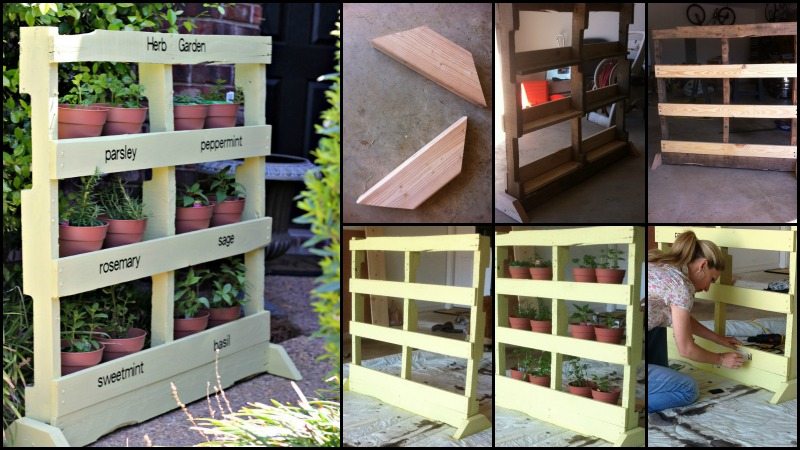
If you’re short on garden space but love the idea of fresh herbs, this simple pallet project could be the answer.
A vertical herb garden is a growing trend in the urban gardening/homesteading community. With a vertical herb garden, you can grow a wide range of greens and herbs, with just a little bit of space, and even in the city.
These small-space gardens provide an organic alternative to traditional gardening (but can still be grown in the ground if you prefer). A vertical herb garden is great for apartment dwellers, backyard gardeners, and anyone who doesn’t have a lot of space for their garden.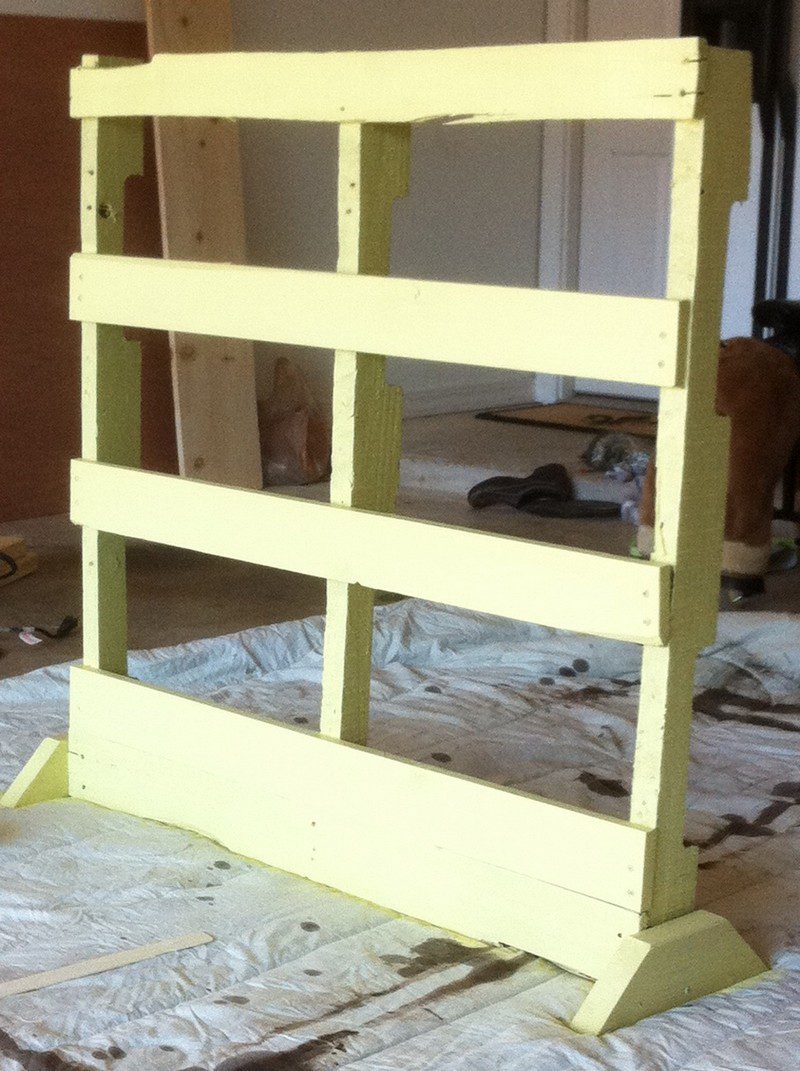
We love our gardens. There is always a sense of contentment and tranquillity that comes from observing either a single flower or the patchworks of colour and texture in a well-tended garden.
The same feeling comes from seeing fresh herbs spilling green and sweet-smelling out of a container. We simply can’t get enough of it.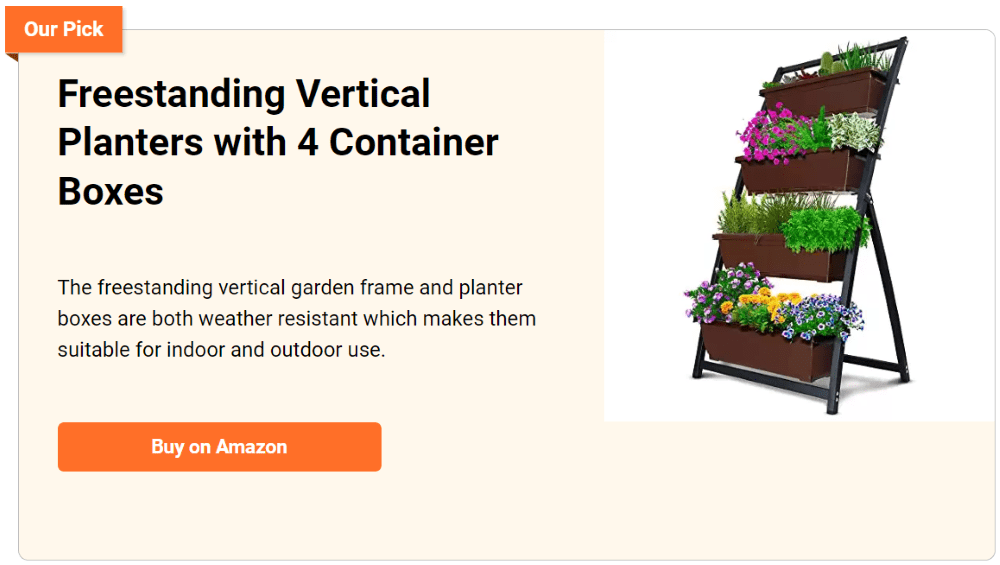
While you may think we’re presenting the idea to look easy, we agree that working with pallets is almost always a challenge. But if you have a pallet breaker this project will get a lot easier! (Learn more about DIY pallet breakers here.)
Planning on using pallets to make your space-saving vertical herb garden? Don’t forget to choose the right kind of pallet. Though the wood here doesn’t come in contact with the plants and soil, chemicals present in some pallets can still contaminate your herbs!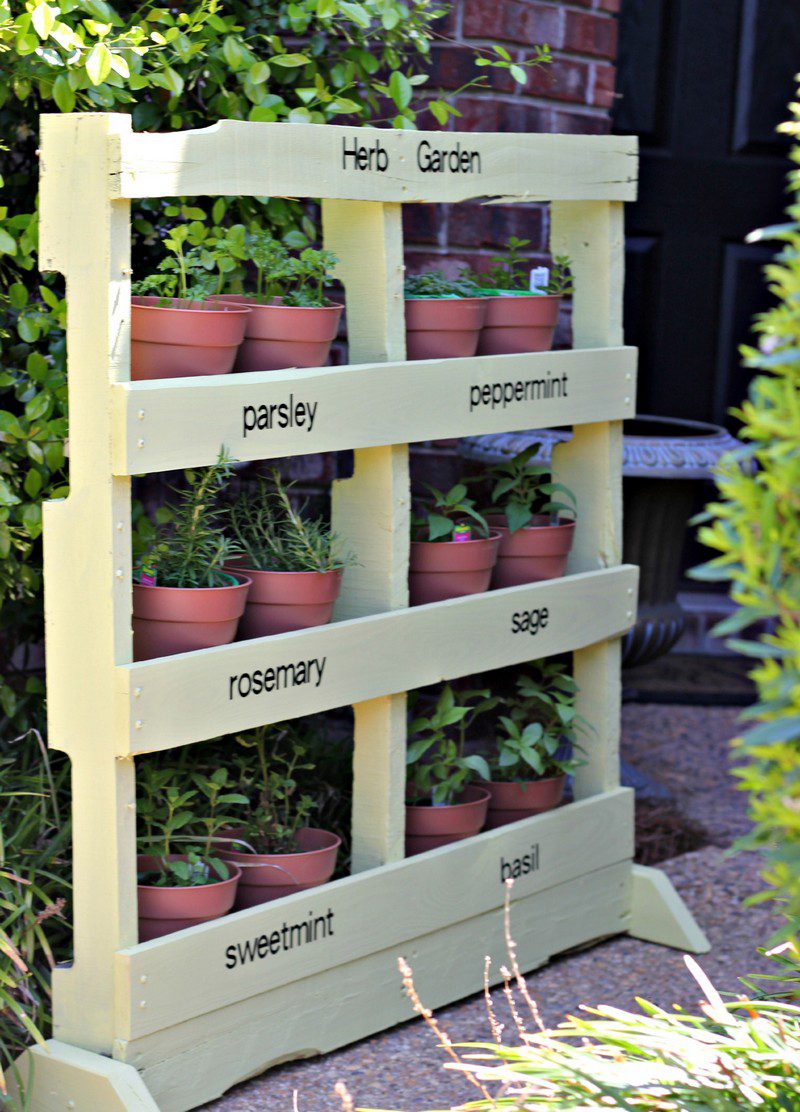
Building a Vertical Herb Garden From Pallets
Revamped Pallets
All you have to do is revamp the old pallets by replacing bad boards with new ones and attach two wooden legs on the sides below to make them stand.
It’s always fun to turn anything old into new. Pallets are just the perfect thing for you to make a vertical pallet planter with. Repurposing old pallets is eco-friendly and budget-friendly too.
Working with the power tools (saw for cutting pallet templates for your project, drill and screws for attaching the parts ) may speed up the process of assembling your vertical herb garden.
For your vertical herb garden to be effective, it does not need to be a permanent fixture in your kitchen. This means that you will need a vertical garden that is sturdy enough to stand alone.
Make sure that you choose a vertical garden that will be able to stand up to the elements securely without being mounted to a wall or a table.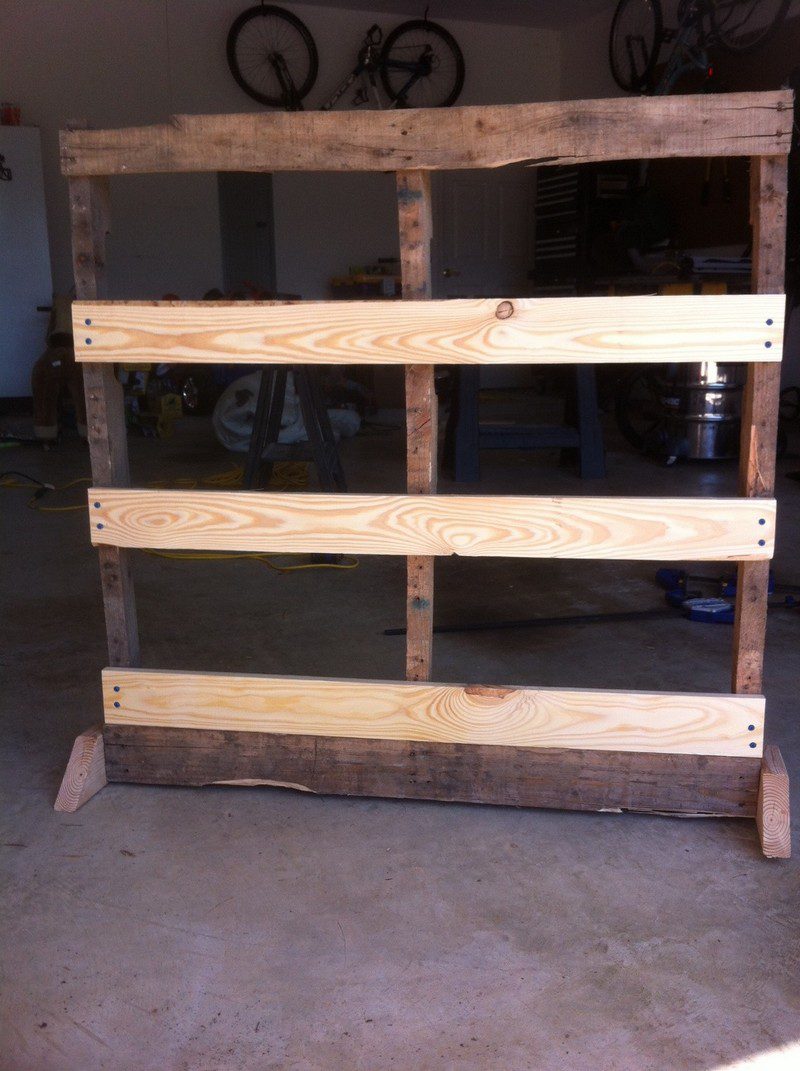
Pain the Pallet
Painting your pallet is a great idea, you have a good framework to start with. But, make sure you use high-quality paint and coat it twice.
If you use cheaper paint, no matter how well you paint the pallet, the paint will give out and you’ll be left with a rusting mess of a pallet.
The more expensive paints will last a long time. If you have a lot of money to spare you can buy plastic coatings to cover your pallet.
Adding labels to your vertical herb garden will avoid confusion on what herbs you planted.
What do you think of this vertical herb planter? Is it a go?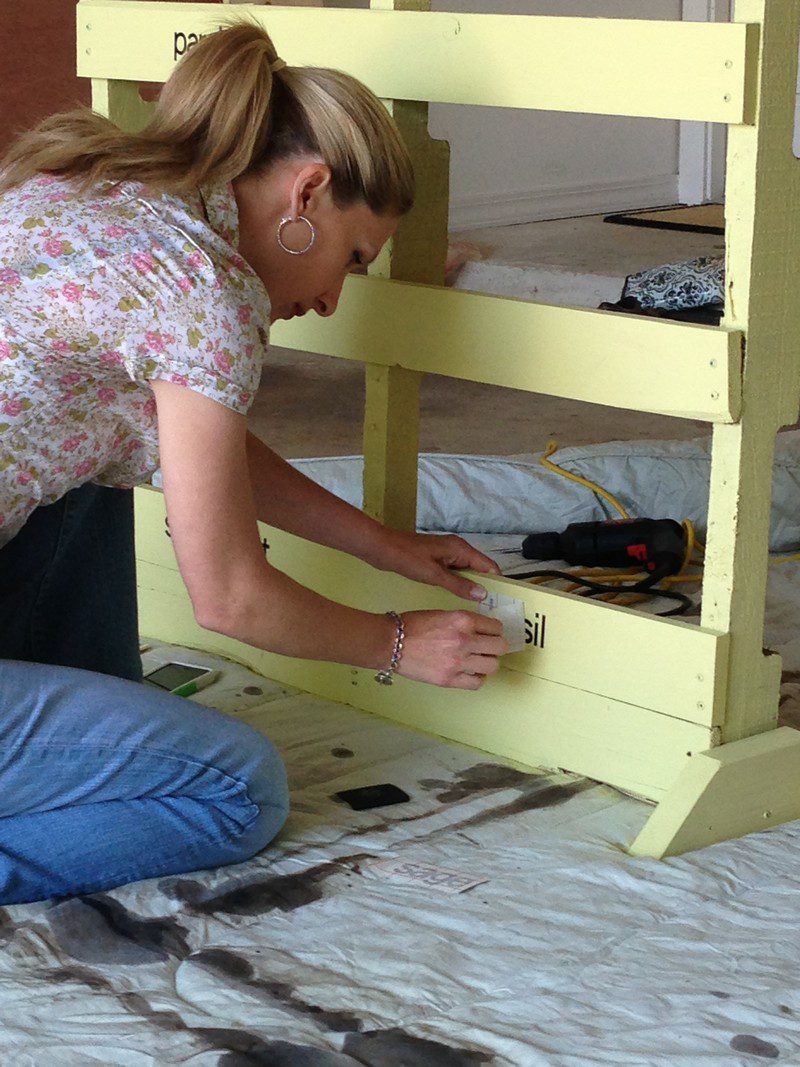
Materials:
- Used Pallets (in good condition)
- 1×4 Boards (from previous projects, in case of replacements)
- Long Screws
- Wood Glue
- Paint of your choice
- Vinyl or Stencil for labelling the herbs
Tools:
- Kreg Jig
- Drill
- Clamps
- Level
- Paint Brush
- Pallet Breaker
Click on any image to start the lightbox display. Use your Esc key to close the lightbox. You can also view the images as a slideshow if you prefer 😎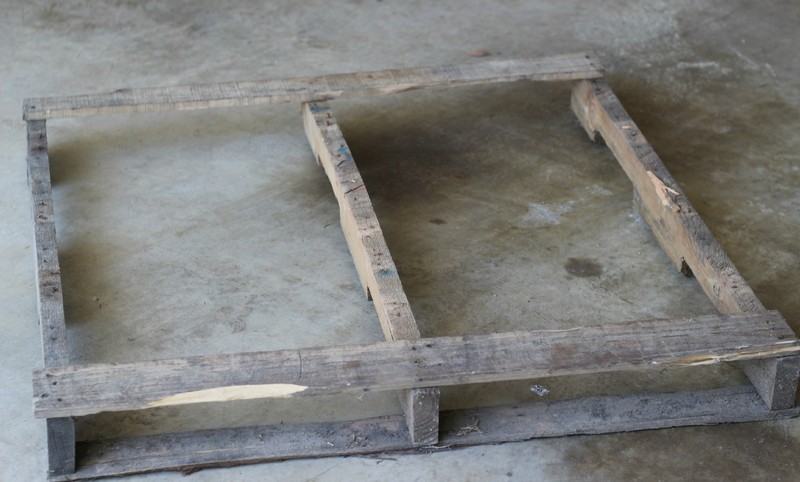
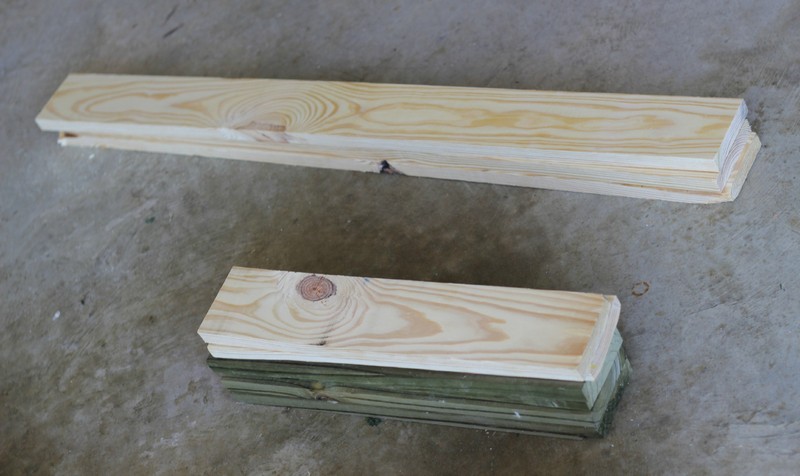
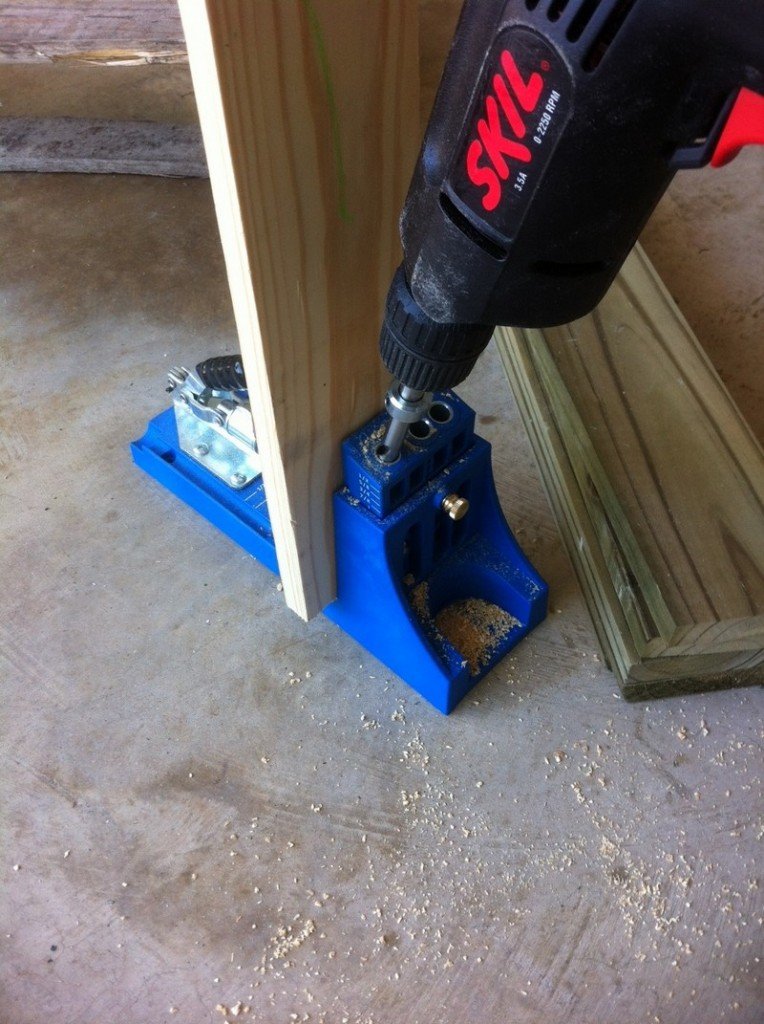
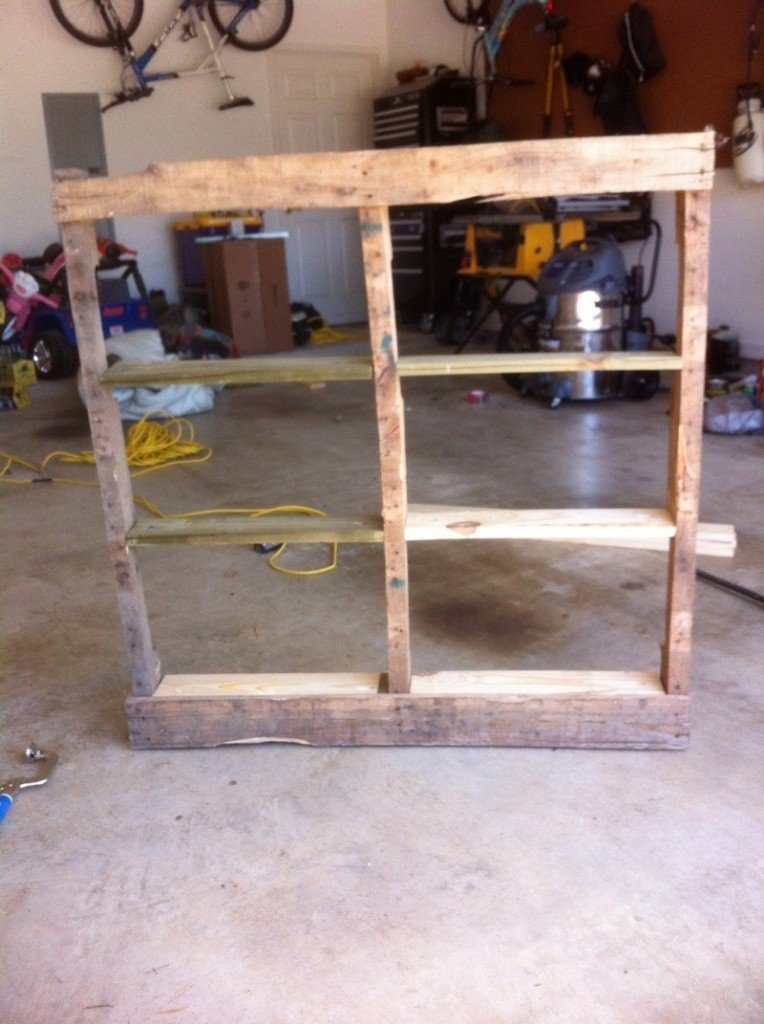
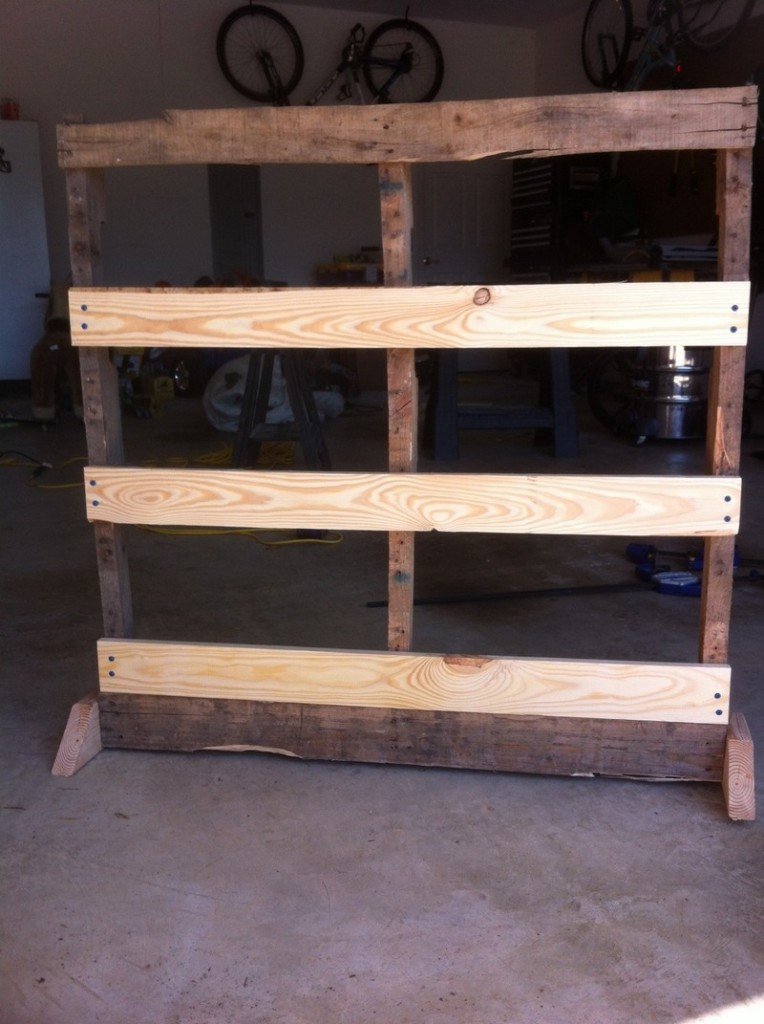
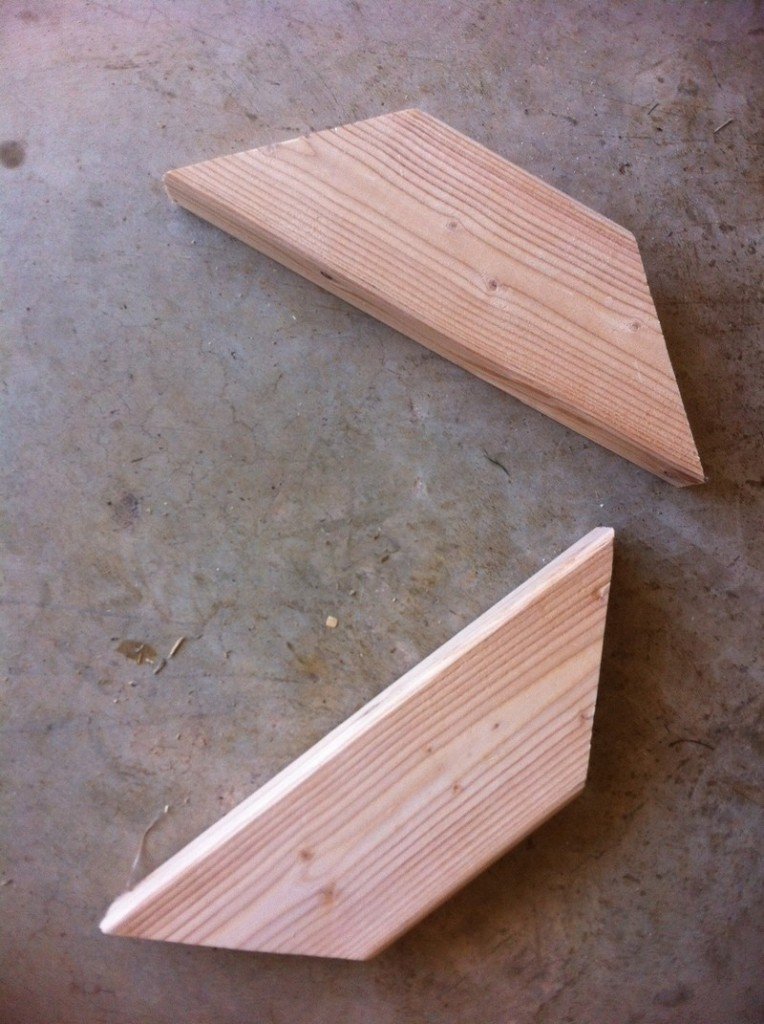
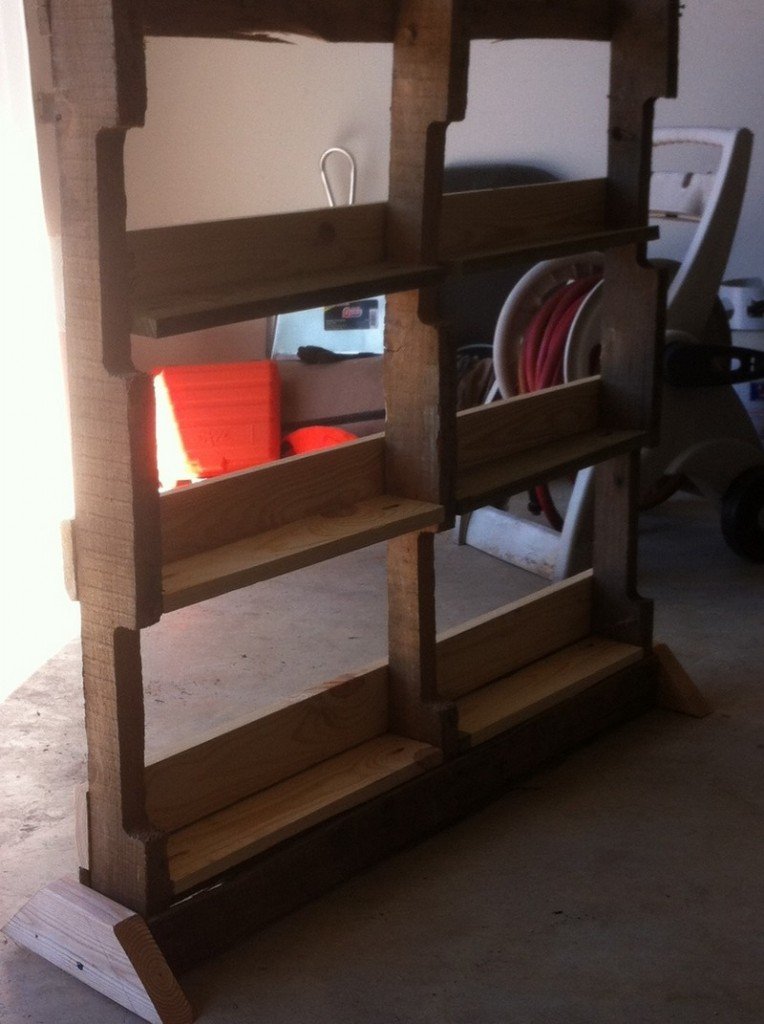
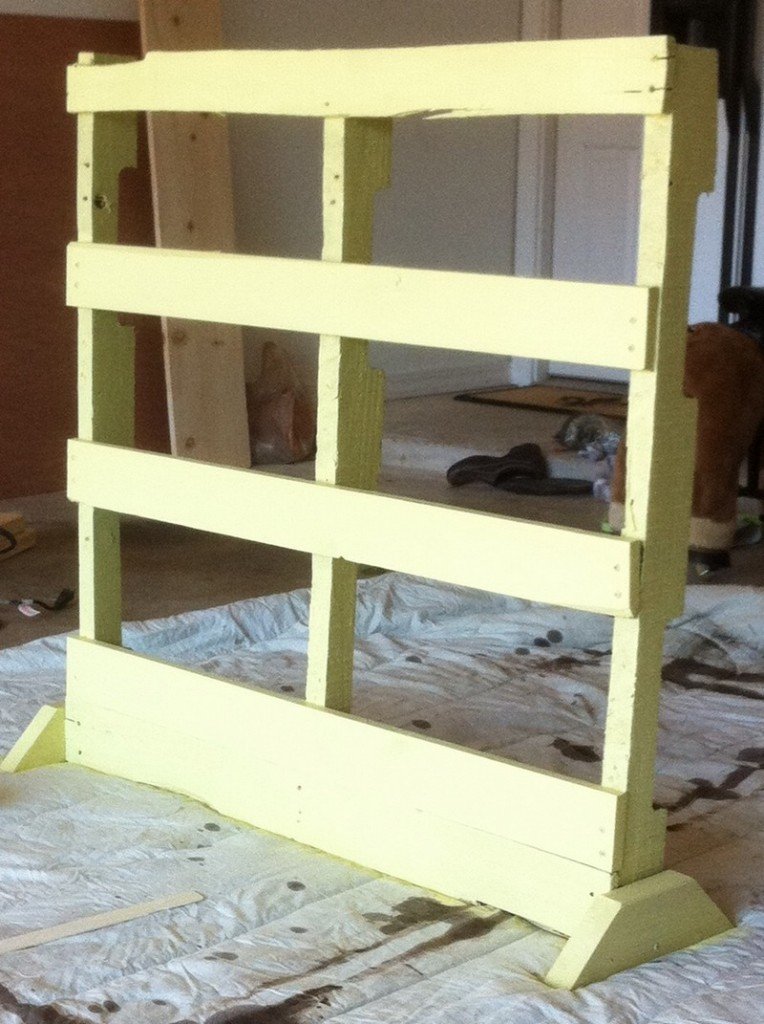
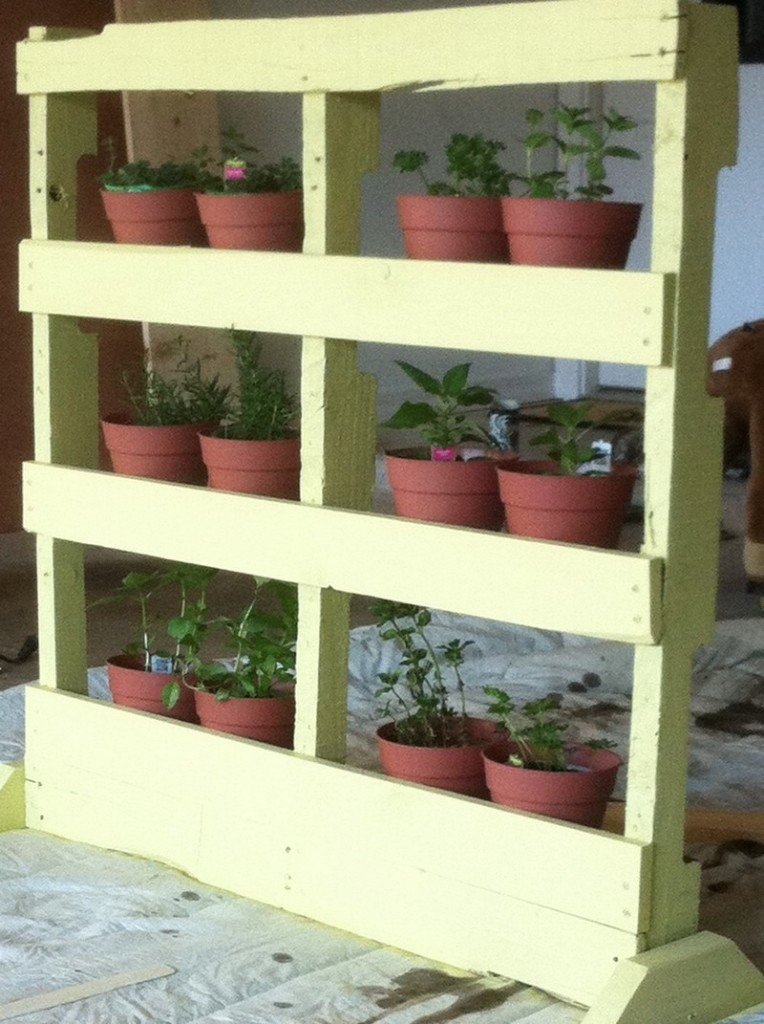
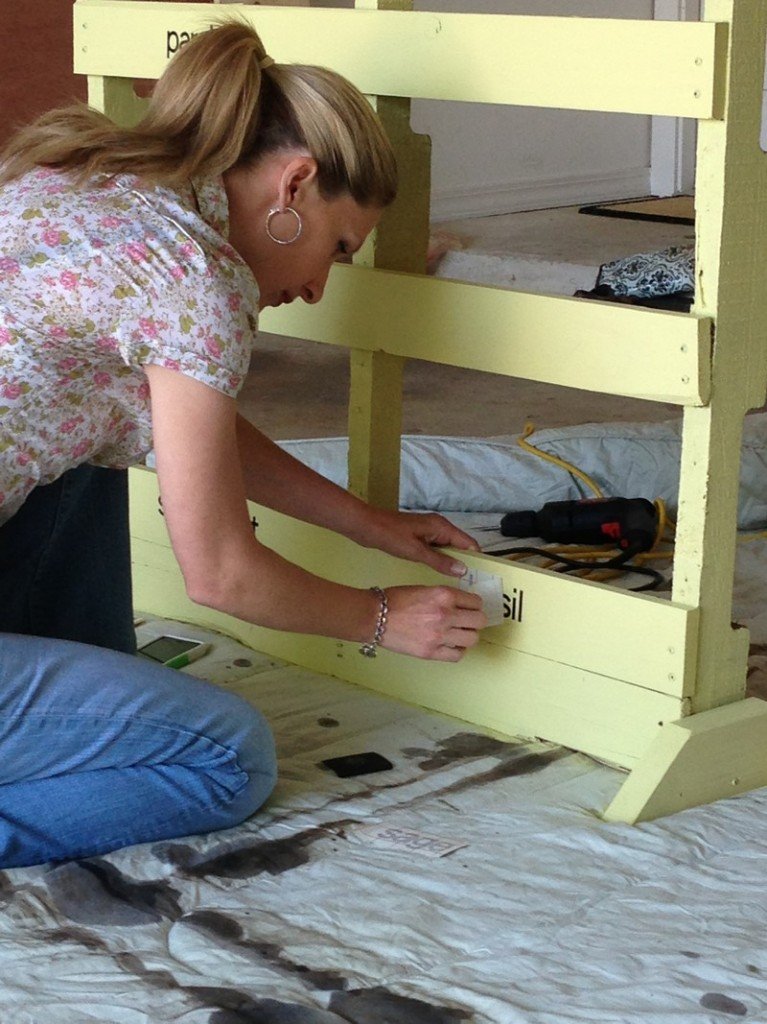
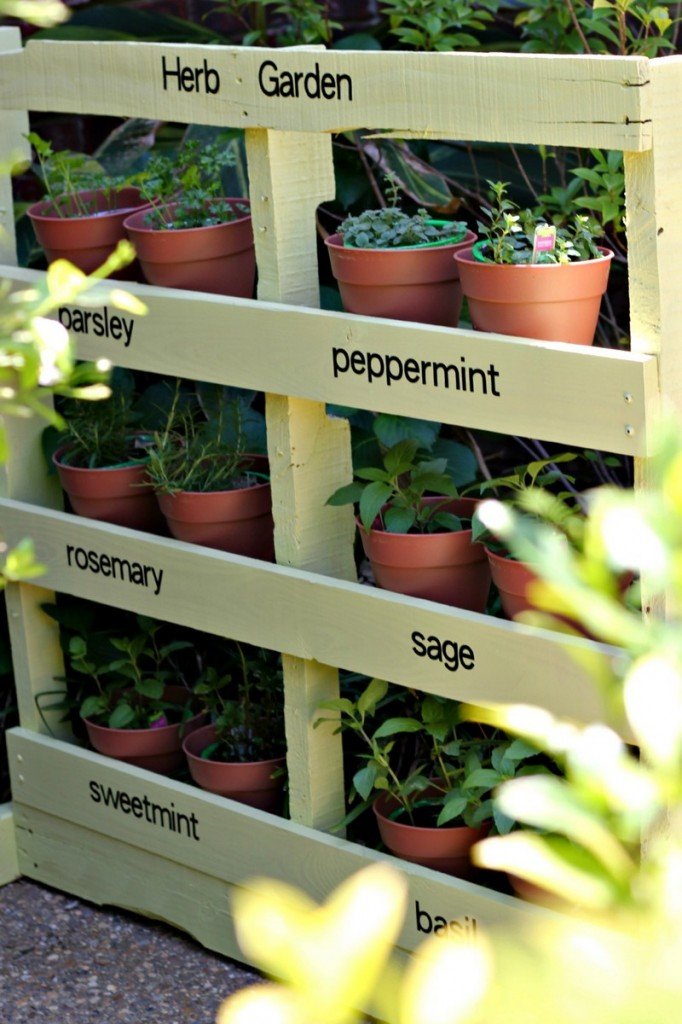
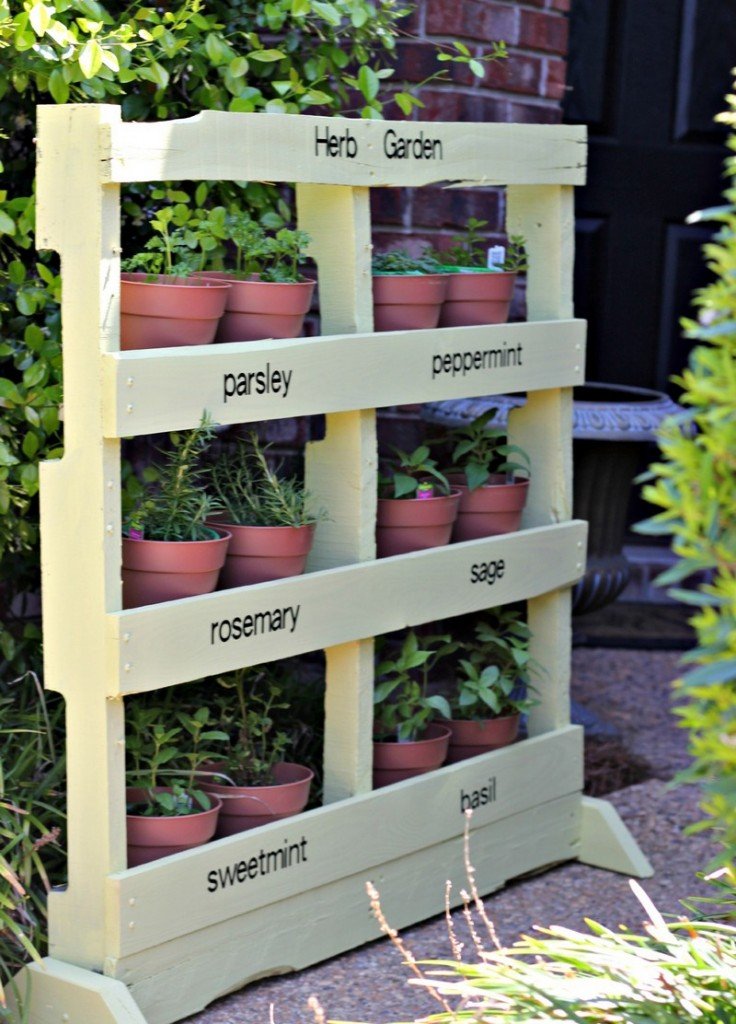
Thanks to Pink When for this great project! You can get step-by-step instructions here…
Best Herbs to Grow in a Vertical Herb Garden
A vertical herb garden is a practical way to grow fresh herbs, even in small spaces. Whether you’re working with a balcony, patio, or kitchen wall, this setup lets you enjoy homegrown flavors without needing much room. Choosing the right herbs will make your vertical garden more productive, ensuring a steady supply of fresh greens throughout the year. Some herbs adapt better than others to vertical gardening, thriving in confined spaces while maintaining strong growth.
Basil
Basil is one of the easiest and most rewarding herbs to grow in a vertical herb garden. It loves warm temperatures and thrives in well-draining soil. Whether you prefer classic sweet basil, Thai basil, or purple basil, this herb is perfect for adding fresh flavor to pasta, salads, and homemade pesto. Regular harvesting encourages bushier growth, making basil an ideal choice for vertical gardening.
Mint
Mint is a hardy herb that grows well in containers, making it perfect for vertical setups. Since it spreads aggressively in traditional garden beds, a vertical herb garden helps control its growth while keeping it within reach for tea, desserts, and cocktails. Peppermint and spearmint are popular choices, each offering a refreshing flavor. Ensure your vertical garden has good drainage, as mint prefers slightly moist but not soggy soil.
Rosemary
Rosemary is a woody herb that thrives in dry conditions, making it a low-maintenance addition to a vertical garden. It prefers full sun and well-draining soil, so be sure your pallet or wall-mounted planter gets enough light. The fragrant, needle-like leaves are perfect for seasoning meats, potatoes, and soups. Since rosemary grows upright, it fits well in the upper sections of a vertical garden.
Thyme
Thyme is a drought-tolerant herb that requires little attention, making it perfect for vertical gardens. It has small, aromatic leaves that enhance the flavor of roasted vegetables, meats, and stews. Lemon thyme offers a citrusy twist, while common thyme delivers a classic earthy taste. Because of its trailing habit, thyme works well in the lower sections of a vertical garden, cascading beautifully over the edges of planters.
Parsley
Parsley is a versatile herb that grows well in a vertical garden, providing fresh leaves for garnishing dishes, making sauces, and enhancing soups. Both curly and flat-leaf varieties thrive in containers. This herb enjoys moist soil and partial to full sun. Regular harvesting helps it maintain a healthy, bushy appearance while preventing it from bolting too soon.
Oregano
Oregano is a resilient herb that thrives in dry, sunny conditions. It has a strong, earthy flavor perfect for Italian and Mediterranean dishes. Since oregano spreads naturally, a vertical setup helps contain its growth while allowing easy harvesting. Like rosemary and thyme, it requires minimal watering and benefits from occasional trimming to keep it compact.
Chives
Chives are a fantastic addition to any vertical garden, growing in small clumps that require little space. Their mild onion-like flavor works well in salads, soups, and egg dishes. Chives grow back quickly after cutting, ensuring a steady supply of fresh herbs. They also produce beautiful purple flowers that attract pollinators if allowed to bloom.
Growing the right herbs in a vertical garden ensures a continuous harvest of fresh flavors. With the right care, these herbs will thrive in a small-space setup, bringing convenience and greenery to your home.
How to Maintain a Vertical Herb Garden
A vertical herb garden is a space-saving way to grow fresh herbs, but it requires regular care to stay healthy and productive. Proper watering, pruning, and pest management will ensure your herbs thrive, providing a continuous harvest throughout the year. By following a few simple maintenance practices, you can keep your vertical garden looking vibrant and full of life.
Watering the Right Way
Consistent watering is essential for maintaining a vertical herb garden, as plants in containers dry out faster than those in the ground. Herbs like basil, parsley, and chives prefer consistently moist soil, while rosemary, thyme, and oregano thrive in drier conditions. A drip irrigation system or self-watering planters can help regulate moisture levels and prevent overwatering. Checking the soil regularly by touching it will help determine when to water—if the top inch feels dry, it’s time to hydrate.
Pruning and Harvesting for Healthy Growth
Regular pruning keeps herbs from becoming overgrown and encourages bushier growth. Snipping off the top leaves of basil, mint, and oregano helps them produce more foliage. For woody herbs like rosemary and thyme, trimming back stems prevents legginess and improves air circulation. Harvesting frequently not only provides fresh ingredients for cooking but also keeps your vertical garden looking neat and compact.
Preventing Pests and Diseases
Particularly in a vertical arrangement where airflow could be limited, pests including aphids, spider mites, and whiteflies can destroy herbs. One can aid by routinely checking leaves for evidence of an infestation and washing off bugs with a strong water spray. Natural solutions for most common pests are neem oil and insecticidal soap. Appropriate plant spacing lets air flow between them, lowering the fungal disease risk including powdery mildew. Eliminating dead or yellowing leaves further helps stop the spread of disease.
Providing the Right Sunlight
To flourish, most herbs require at least six hours of direct sunlight daily. Growth lights can augment natural light if your vertical garden is inside or in a shady region. While shade-tolerant herbs like mint and parsley can be placed lower, placing sun-loving herbs like rosemary, oregano, and thyme toward the top of the structure guarantees they get maximum exposure.
Fertilizing for Stronger Growth
Sometimes, feeding herbs grown in containers helps restore nutrients in the soil. A balanced organic fertilizer keeps plants healthy, applied every several weeks. Using compost or a diluted fertilizer solution works best since over-fertilizing might lessen the intensity of herb tastes. Maintaining constant nutrient levels also depends heavily on slow-release fertilizers.
Protecting Your Herbs from the Elements
Should your vertical herb garden be outside, temperature variations can affect the plants’ condition. Excessive rain can cause overwatering, but wind can rapidly dry the soil. Protecting the plants will depend on securing your vertical garden against strong winds and guaranteeing appropriate drainage. Bringing potted herbs indoors or covering them with frost fabric will help them grow during winter.
Regular maintenance and care will help your vertical herb garden flourish. Proper watering, pruning, and insect management will keep your herbs fresh and delicious, thereby simplifying and rewarding home gardening.
Alternative Vertical Herb Garden Designs
A vertical herb garden doesn’t have to be made from pallets. Depending on your space, budget, and style preferences, there are many creative and space-saving ways to grow fresh herbs in a vertical setup. Whether you prefer wall-mounted planters, hanging pots, or repurposed materials, there’s a design that will work for you. Choosing the right setup ensures easy access to fresh herbs while enhancing your garden or indoor space.
Hanging Planters
Hanging planters are one of the simplest vertical gardening options. They can be suspended from a balcony railing, a sturdy frame, or a pergola. Using tiered hanging baskets or repurposed containers like tin cans or mason jars allows for a stylish and functional herb display. Herbs with trailing growth, like thyme and oregano, work well in this setup, while compact herbs like basil and parsley fit perfectly in small hanging pots.
Wall-Mounted Herb Garden
For those with limited floor space, a wall-mounted vertical garden is a great solution. Wooden boards, metal grids, or wall-mounted planters can hold small pots or fabric pockets filled with soil and herbs. This design works well indoors and outdoors, making it a stylish and space-efficient way to grow culinary herbs in a kitchen or patio. Mounting the garden on a sunny wall ensures herbs get the light they need.
Gutter Herb Garden
Repurposing old gutters into a vertical herb garden is a budget-friendly and creative approach. Mounted on a fence or exterior wall, gutters make excellent herb planters, providing enough space for shallow-rooted plants like chives, cilantro, and parsley. Drilling drainage holes in the bottom prevents water from pooling, and positioning the gutters in a cascading manner improves water distribution.
Stacked Container Herb Garden
Stacked containers provide a structured and compact way to grow multiple herbs in a single vertical unit. This method involves placing large pots at the base and progressively smaller ones on top, creating a pyramid-like effect. Staggering the placement allows each herb to get enough sunlight while saving space. This design works well for patios, balconies, and small gardens.
Trellis with Climbing Herbs
A trellis isn’t just for flowering vines—it can support climbing herbs like nasturtium or sprawling varieties of mint and oregano. Attaching small pots or planter boxes to the trellis provides additional growing space for compact herbs. A trellis herb garden makes an attractive and functional addition to outdoor spaces, offering a decorative and edible greenery display.
Pocket Fabric Herb Garden
A pocket fabric garden is a modern and space-saving option, often made from breathable felt or canvas materials. It allows multiple herbs to be planted in individual pockets, keeping them organized and easy to maintain. This lightweight design works well for renters or those who want a temporary, movable garden. Hanging fabric planters on a balcony railing or fence maximizes vertical growing space without requiring major installations.
Tower Herb Garden
A tower garden is a high-capacity vertical setup that maximizes plant density in a small footprint. It consists of stacked planting pockets, usually made of plastic or metal, that allow herbs to grow outward. Some tower gardens even include built-in watering systems for easy maintenance. This option is ideal for urban gardeners who want to grow multiple herbs in a limited space.
Exploring different vertical herb garden designs helps find the perfect fit for any home or garden. Whether using hanging baskets, mounted planters, or repurposed materials, each design provides a unique way to cultivate fresh, flavorful herbs in small spaces.
Conclusion
Building a vertical herb garden with pallets is a simple, cost-effective way to grow fresh herbs in small spaces. With the right pallet, proper assembly, and thoughtful plant selection, you can create a sturdy and productive garden that fits your space and style. Regular maintenance, including watering, pruning, and protecting the herbs from harsh weather, will ensure a long-lasting and thriving vertical herb garden.
If you liked this project, you will also like viewing these planters…






